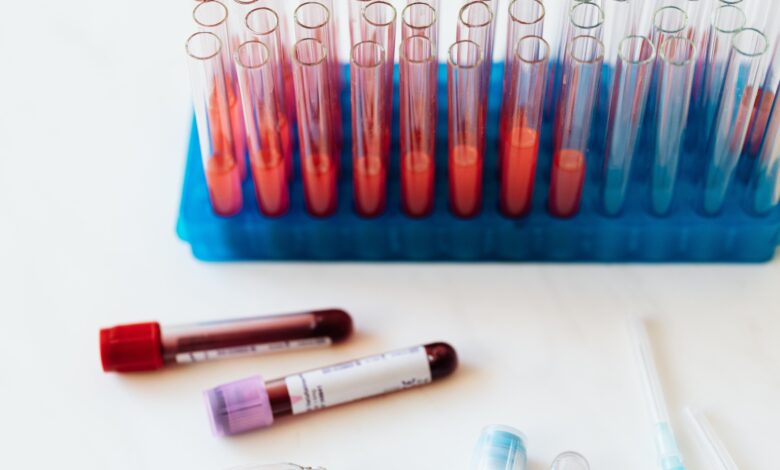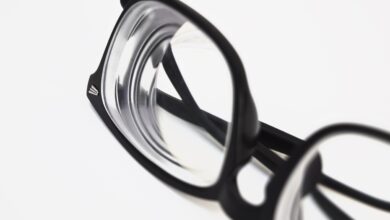All about uric acid analysis

The concentration of uric acid can be determined in the blood or in the urine. Too much is mostly a symptom of gout , too much alcohol consumption, or kidney failure.
What is blood or urinary uric acid?
Uric acid is a waste product of the body. More specifically, it is the end product of excretion of molecules called nucleic acids and purines.
Generally, most of the uric acid contained in the human body dissolves in the blood and goes to the kidneys to be eliminated in the urine. But in some cases, the body produces too much uric acid or fails to eliminate enough. This condition can cause various disorders.
Uric acid and diet
Since uric acid is the end product of purine breakdown , its level varies depending on the purine content in the body. And it turns out that purines are found especially in food.
Here are some foods high in purines to avoid:
- anchovies, herring, mackerel, sardines, prawns, etc.;
- liver, heart, brains, kidneys, sweetbreads, etc.;
- peas, beans, etc.
The consumption of alcohol, and especially beer, is not recommended when you want to reduce your uric acid.
On the contrary, among the authorized foods low in purine, we can mention:
- tea, coffee, soft drinks;
- fruits and vegetables ;
- eggs ;
- bread and cereals;
- cheese and more generally dairy products
Why do a uric acid test?
The doctor prescribes a blood test (we speak of uricemia) and/or a urinary test of uric acid for:
- detect gout;
- assess the proper functioning of the kidneys;
- it can also be requested in the event of pregnancy;
- or in overweight people.
Note that the analysis of the concentration of uric acid in the urine will also help to better understand the origin of a high level of uric acid in the blood.
Blood test for urinic acid
In the blood, the normal value of uric acid is between 35 and 70mg/L.
A higher concentration in the blood is called hyperuricemia and can be caused by an overproduction of uric acid in the body or a decrease in its elimination by the kidneys. Thus, high levels of uric acid in the blood can be a sign of:
- gout (this is also the main cause of an increase in the level of uric acid in the blood);
- an excess of degradation of the body’s proteins which takes place, for example, during chemotherapy, leukemia or even lymphoma;
- alcoholism;
- excessive physical exercise;
- the presence of kidney stones;
- rapid weight loss;
- diabetes;
- a diet high in purine;
- preeclampsia during pregnancy;
- or kidney failure.
On the contrary, it is possible that the blood level is lower than normal, but this is a rarer condition than the scenario where it ends up higher.
Thus, uric acid levels below normal values can be linked to:
- a diet low in purines;
- Wilson’s disease (a genetic disease characterized by an accumulation of copper in the body);
- kidney (such as Fanconi syndrome) or liver damage;
- or exposure to toxic compounds (lead).
In urine, the normal value of is between 250 and 750 mg/24 hours.
Note that normal values may vary slightly depending on the laboratories performing the analyses.
Affecting 5 to 15% of the population, it is a frequent biochemical anomaly, resulting from an overproduction of uric acid and/or a diminished renal elimination. It often develops without pain and is therefore not always immediately diagnosed.
High uric acid levels can be explained by:
Idiopathic or primary hyperuricaemia
They represent the vast majority of cases. Hereditary predispositions are found in 30% of subjects, but they are often associated with obesity, overeating, arterial hypertension, alcohol abuse, diabetes and hypertriglyceridemia.
Rare enzyme abnormalities
They are encountered in particular in Von Gierke’s disease and Lesch-Nyhan’s disease. These enzymatic abnormalities have the particularity of causing gout attacks very early, ie in the first 20 years of life.
Hyperuricaemia secondary to disease or drug treatment.
These hyperuricemias may be due
to: – a defect in the elimination of uric acid. This is the case for kidney failure, but also because of certain drugs (diuretics, but also laxatives and certain antituberculosis drugs).
– an increase in the degradation of nucleic acids. We see this in blood diseases (leukemia, blood diseases, hemolytic anemia, extensive psoriasis), and in the aftermath of certain cancer chemotherapy.
The consequences of hyperuricemia
Hyperuricemia can cause two types of problems:
- Gout responsible for inflammatory joint pain.
When the microcrystals of uric acid dissolved in the blood are in too high a concentration and the local conditions are favorable (in particular a sufficient acidity of the medium), they precipitate and cause local inflammation. This preferentially affects the big toe joint. Only 1 in 10 people with too much uric acid in their blood will develop gout, so you need extra susceptibility to get it.
- Urinary lithiasis.
They are due to the presence of one or more stones in the urinary tract and are responsible for renal colic. Urolithiasis is a very common disease since 1 to 2% of the population is affected in France.
How is the analysis carried out?
The analysis of the single acid level can be carried out in the blood and/or in the urine:
- the blood test consists of a venous blood sample, usually in the bend of the elbow;
- the level of in the urine is measured for 24 hours: to do this, it suffices to urinate in a container provided for this purpose and provided by the medical staff for one day and one night.
Note that it is advisable not to eat or drink anything during the hours preceding the test.
What are the variation factors?
Many factors are likely to vary the level of , in the blood or in the urine. Let us mention in particular:
- les aliments (pauvres ou riches en purines) ;
- drugs (to sign gout, aspirin, or even diuretics);
- age, children with lower values;
- gender, with women generally having lower rates than men;
- weight, obese people having a higher rate.
Drug treatments if hyperuremia is symptomatic are as follows:
- Nucleic acid synthesis reducers, such as allopurinol. You have to be very careful because there are many interactions with other drugs.
- Drugs that inhibit renal reabsorption of uric acid, such as benzbromarone.
- Enzymatic treatments which often cause allergy problems.
Whatever happens, it is the doctor who must decide whether a treatment should be followed, and which is the most suitable.














